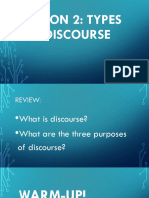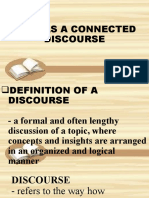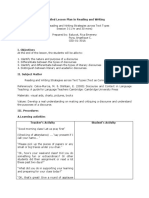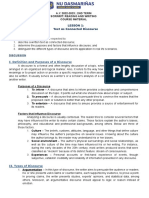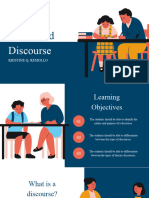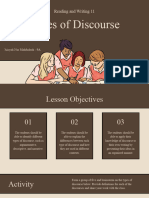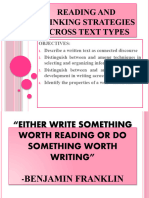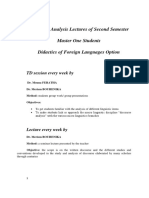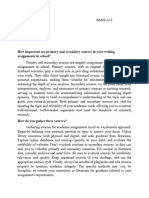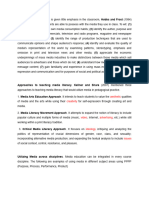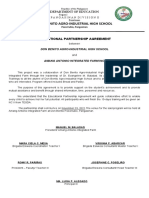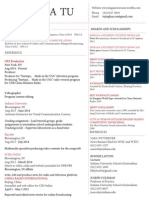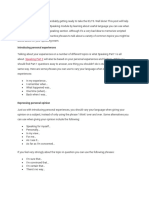0% found this document useful (0 votes)
70 views4 pagesDiscourse Types Hand Out
This document provides an overview of different types of discourse or rhetorical modes. It defines discourse as written or spoken language aimed at a specific purpose and audience. There are two main categories of discourse: scientific/technical, which aims to objectively communicate information through facts and evidence; and artistic, which uses subjective language to express feelings or opinions to an audience. The document then outlines four common rhetorical modes - narration, description, exposition, and argument - and provides examples of genres that fall under each mode.
Uploaded by
Tibetan FoxCopyright
© © All Rights Reserved
We take content rights seriously. If you suspect this is your content, claim it here.
Available Formats
Download as PDF, TXT or read online on Scribd
0% found this document useful (0 votes)
70 views4 pagesDiscourse Types Hand Out
This document provides an overview of different types of discourse or rhetorical modes. It defines discourse as written or spoken language aimed at a specific purpose and audience. There are two main categories of discourse: scientific/technical, which aims to objectively communicate information through facts and evidence; and artistic, which uses subjective language to express feelings or opinions to an audience. The document then outlines four common rhetorical modes - narration, description, exposition, and argument - and provides examples of genres that fall under each mode.
Uploaded by
Tibetan FoxCopyright
© © All Rights Reserved
We take content rights seriously. If you suspect this is your content, claim it here.
Available Formats
Download as PDF, TXT or read online on Scribd
/ 4













